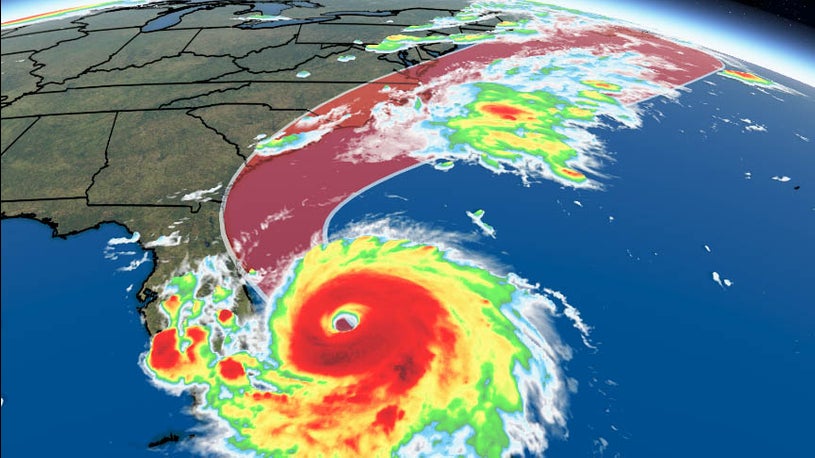As the most powerful hurricane on record moves onto land, those of us not in its path are reminded (perhaps too harshly) that we should stay prepared for natural disasters on a household level. While September reminds most of us of horrific events in 2001, and kicks off the long-awaited football season, it is also National Preparedness Month. During which time Homeland Security, FEMA, Ready.gov, the American Red Cross and others remind us that it’s not just up to Emergency Management Agencies (EMA) to take care of us when bad things happen.
“You are the help until help arrives.” — dEPARTMENT OF hOMELAND SECURITY
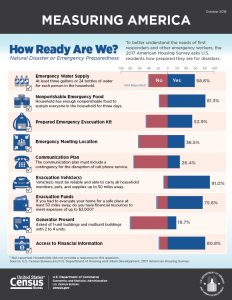
A deep wealth of informational resources for preparedness can be found on Ready.gov. There is so much in fact, that it can seem overwhelming. Are you ready for anything?
While the vast plans on that site may seem too far, akin to becoming a “prepper” to some, in actuality weather disaster preparation is only a fraction of what a prepper would do in getting ready for an apocalyptic scenario.
I’ll break down some basics of preparedness in a series of articles – starting with this one – keeping with the National Preparedness Month schedule of themes (sort of). This first installment of This Old Prepper will cover the basics of information and planning (in a very broad sense). Next time I’ll discuss a disaster prep kit – the stuff you need to stay safe and survive almost any natural disaster situation.
National Preparedness Month (NPM) is recognized each September to promote family and community disaster and emergency planning now and throughout the year. The 2019 theme is Prepared, Not Scared. Be Ready for Disasters. — Ready.gov
“I love it when a plan comes together.” — Hannibal Smith
It all starts with a plan. Think it out. What should you and your family or friends do? How best to insure your household’s survival in a disaster scenario?
Bibb County EMA Director Kirk Smith stated in an interview for a previous Bibb Voice article from April, 2019, regarding tornado sirens and emergency alerts, “A lot of safety starts at home. Everybody should have a plan.”
Ready.gov outlines the basics of household emergency planning as such:
Put together a plan by discussing these 4 questions with your family, friends, or household to start your emergency plan.
-
-
-
- How will I receive emergency alerts and warnings?
- What is my shelter plan?
- What is my evacuation route?
- What is my family/household communication plan?
-
-
Question 1: How to get Alerts and Warnings? Use Smartphone/Tablet Apps for Info Gathering, and NOAA Weather Radios for when the power goes out.
For Bibb residents, everyone should sign up for the free alerts from Bibb Alert (by clicking here), which has replaced our tornado (emergency warning) sirens. I can attest that this system does work well as long as you have service to your smartphone. You’ll have to download an app and put in some basic info, but this app can also allow first responders to find the last location of your phone in an emergency, if you enable location sharing.
Other useful apps that I personally use are (click links to get these):
- Weather Radio App – as recommended by James Spann. Works well and sends out NOAA alerts as well, if set to do so.
- Wunderground – formerly known only as Weather Underground (not related to the counter-culture extremists of the 1960’s), I’ve used this site since the early 2000’s and it has consistently proven more accurate and reliable than the Weather Channel (weather.com). Their app continues their usefulness into the current mobile environment.
- Storm app – an extra level of radar detail from wunderground, apparently only available to Apple platforms and not currently for Android devices, this app offers detail such as almost live view lightning strike locations.
- Bibb Alert – every Bibb County resident should have this on their phone. Sign up via the link here, then download the app (shows as Everbridge) via your device’s store, and log in to the app on your device using the credentials entered when signing up. Simple.
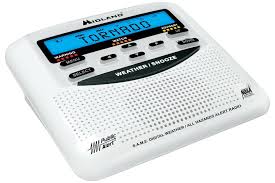 Aside from phone apps, there are good old fashioned weather radios. Whether you choose a plug-in (battery backup) table model or a portable hand-crank/solar/battery/plug-in model, be sure to have one in your emergency kit. The safest bet is probably to keep one by your bed and another in your evacuation kit (bug-out bag, or BOB, as it were).
Aside from phone apps, there are good old fashioned weather radios. Whether you choose a plug-in (battery backup) table model or a portable hand-crank/solar/battery/plug-in model, be sure to have one in your emergency kit. The safest bet is probably to keep one by your bed and another in your evacuation kit (bug-out bag, or BOB, as it were).
Basic models 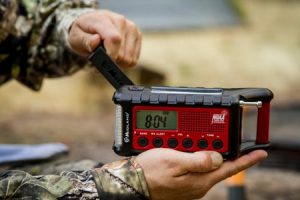 start around $20, and some top of the line portables can range over $100. Knowing where exactly the storm is when all the lights are out and your family is huddled in the hall bathroom, however, can be priceless. I remember all too well the horror of sitting in the basement with my young children as the massive April 27, 2011, tornado carved its way through the landscape less than seven miles from our house outside of Hueytown, depositing remnants of Tuscaloosa in our yard and neighborhood as it went. Knowing exactly how far it was from us … that it went south … was invaluable peace of mind in that moment.
start around $20, and some top of the line portables can range over $100. Knowing where exactly the storm is when all the lights are out and your family is huddled in the hall bathroom, however, can be priceless. I remember all too well the horror of sitting in the basement with my young children as the massive April 27, 2011, tornado carved its way through the landscape less than seven miles from our house outside of Hueytown, depositing remnants of Tuscaloosa in our yard and neighborhood as it went. Knowing exactly how far it was from us … that it went south … was invaluable peace of mind in that moment.
If you would like some help with the apps or radios, be sure to make it out to the Brierfield Fire & Rescue Weather Preparedness Event. .This is a free event on Saturday September 21, 2019 from 1-3 PM at the Brierfield Fire Station – Highway 139. EMA Director for Bibb County Kirk Smith will be on hand to sign you up for the Bibb Alert system.
Question 2: Shelter
Think tornado drill and you get the idea here. Choose a central room with no windows, as low as possible to the ground if not below ground level. Bathrooms often work well, and children can huddle in a tub with a twin bed mattress covering for extra protection.
If you’re traveling or evacuating, remember that no matter how heavy your 4×4 SUV may be, a tornado doesn’t care and will throw it to Auntie Em’s house with you inside. Get off the road and find physical shelter, preferably encased in concrete, if a tornado is near. The best bet is to stay home unless you’re heading to a public shelter or being told to evacuate.
Question 3: Evacuation route answers would be too personally tailored and varied for anyone besides you to answer for yourself (besides saying avoid high-traffic routes but avoid pig trails that may be impassable), so we will move on to…
Question 4: the Communication Plan.
Any household should fill out an emergency communications plan, but especially those with multiple members including children. It makes it easy for everyone to keep a copy in their emergency bag, plus one on the fridge. Download the free form here. Print it out, fill it out, make copies, distribute to everyone in your household. Most importantly, make sure everyone knows how to use it, being who to call and how in any situation. Practice it with your children to insure there are no questions or confusion.
It’s also a good idea to be sure your child’s school has all current numbers and methods on file to get in touch with you and back-up contacts in emergencies.
How Much Will This Cost?
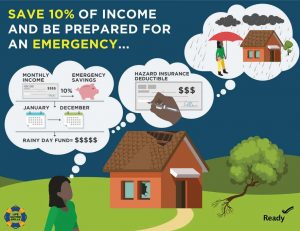 Another part of emergency preparedness that most of us don’t think about – at least until we’re shopping Amazon or Walmart for items to go in our emergency kits – is money.
Another part of emergency preparedness that most of us don’t think about – at least until we’re shopping Amazon or Walmart for items to go in our emergency kits – is money.
Not only will you need money to buy some emergency supplies (next article), but you should also keep some cash on hand hidden in your emergency kit in case you need to evacuate quickly. Imagine having 1/4 tank of gas left, heading out of town with your family, and the gas station’s card readers aren’t working. Be ready to pay cash, and more than you should, for unexpected resources in an emergency situation.
You should also set up an emergency-fund savings account with your bank or credit union. This can be hard to achieve for many of us, granted. But, it can be much easier to save now than take out a loan later.
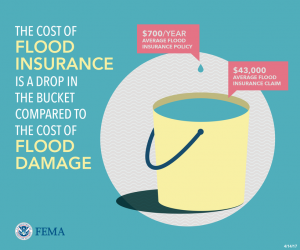 Be sure you have insurance on high-ticket items. Whether you’re a homeowner or a renter, you should be insured. Structure insurance and contents insurance are different things. Renters should have their personal property (major items) cataloged, photographed, and insured with renters’ insurance. Homeowners should also have contents insurance as part of their homeowner’s policy. Be sure to include a rider for any specific and expensive items such as collectible antiques. Be aware, too, that flood insurance is almost never a part of standard homeowner’s policies and must be purchased separately if you are in a flood plain.
Be sure you have insurance on high-ticket items. Whether you’re a homeowner or a renter, you should be insured. Structure insurance and contents insurance are different things. Renters should have their personal property (major items) cataloged, photographed, and insured with renters’ insurance. Homeowners should also have contents insurance as part of their homeowner’s policy. Be sure to include a rider for any specific and expensive items such as collectible antiques. Be aware, too, that flood insurance is almost never a part of standard homeowner’s policies and must be purchased separately if you are in a flood plain.
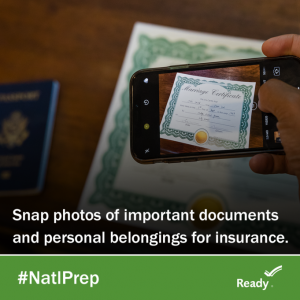 Another aspect of insurance is documentation. Not only documenting items, but important papers such as birth certificates, licenses, and especially your insurance policies. Take photos of these to keep in your phone, and upload to secured cloud storage. This not only keeps track of everything, it makes it easier to file insurance claims when damage does occur.
Another aspect of insurance is documentation. Not only documenting items, but important papers such as birth certificates, licenses, and especially your insurance policies. Take photos of these to keep in your phone, and upload to secured cloud storage. This not only keeps track of everything, it makes it easier to file insurance claims when damage does occur.
Making physical copies to keep in your kit is also a good idea. Be sure any papers are weather sealed. If you have a fire-resistant safe for documents or firearms at home, keep originals locked away safely as well.
Next time, in This Old Prepper – Part 2, we will look at what belongs in your Disaster Kit. I’ll discuss what items are crucial as well as some ways to save some money.
THE OPINIONS EXPRESSED IN THIS ARTICLE ARE THOSE OF THE WRITER AND NOT THOSE OF THE BIBB VOICE OR ITS EDITORIAL STAFF.


